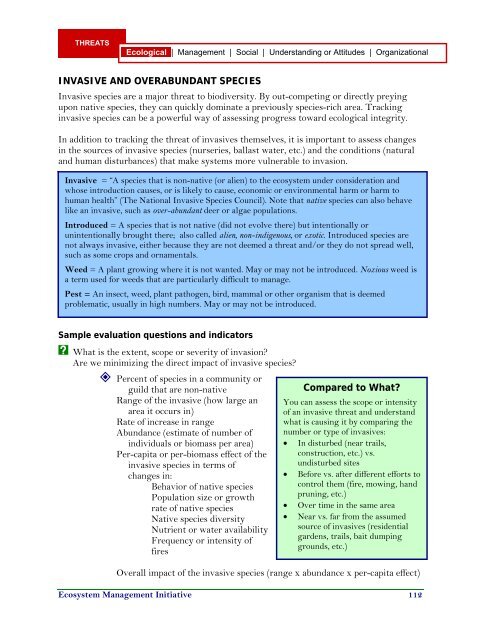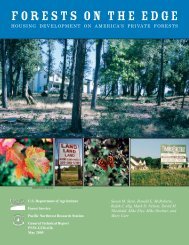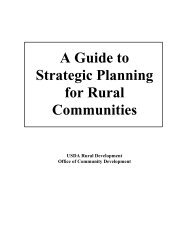Evaluation Sourcebook (.pdf) - School of Natural Resources and ...
Evaluation Sourcebook (.pdf) - School of Natural Resources and ...
Evaluation Sourcebook (.pdf) - School of Natural Resources and ...
- No tags were found...
Create successful ePaper yourself
Turn your PDF publications into a flip-book with our unique Google optimized e-Paper software.
THREATSEcological | Management | Social | Underst<strong>and</strong>ing or Attitudes | OrganizationalINVASIVE AND OVERABUNDANT SPECIESInvasive species are a major threat to biodiversity. By out-competing or directly preyingupon native species, they can quickly dominate a previously species-rich area. Trackinginvasive species can be a powerful way <strong>of</strong> assessing progress toward ecological integrity.In addition to tracking the threat <strong>of</strong> invasives themselves, it is important to assess changesin the sources <strong>of</strong> invasive species (nurseries, ballast water, etc.) <strong>and</strong> the conditions (natural<strong>and</strong> human disturbances) that make systems more vulnerable to invasion.Invasive = “A species that is non-native (or alien) to the ecosystem under consideration <strong>and</strong>whose introduction causes, or is likely to cause, economic or environmental harm or harm tohuman health” (The National Invasive Species Council). Note that native species can also behavelike an invasive, such as over-abundant deer or algae populations.Introduced = A species that is not native (did not evolve there) but intentionally orunintentionally brought there; also called alien, non-indigenous, or exotic. Introduced species arenot always invasive, either because they are not deemed a threat <strong>and</strong>/or they do not spread well,such as some crops <strong>and</strong> ornamentals.Weed = A plant growing where it is not wanted. May or may not be introduced. Noxious weed isa term used for weeds that are particularly difficult to manage.Pest = An insect, weed, plant pathogen, bird, mammal or other organism that is deemedproblematic, usually in high numbers. May or may not be introduced.Sample evaluation questions <strong>and</strong> indicatorsX What is the extent, scope or severity <strong>of</strong> invasion?Are we minimizing the direct impact <strong>of</strong> invasive species? Percent <strong>of</strong> species in a community orguild that are non-nativeRange <strong>of</strong> the invasive (how large anarea it occurs in)Rate <strong>of</strong> increase in rangeAbundance (estimate <strong>of</strong> number <strong>of</strong>individuals or biomass per area)Per-capita or per-biomass effect <strong>of</strong> theinvasive species in terms <strong>of</strong>changes in:Behavior <strong>of</strong> native speciesPopulation size or growthrate <strong>of</strong> native speciesNative species diversityNutrient or water availabilityFrequency or intensity <strong>of</strong>firesCompared to What?You can assess the scope or intensity<strong>of</strong> an invasive threat <strong>and</strong> underst<strong>and</strong>what is causing it by comparing thenumber or type <strong>of</strong> invasives:• In disturbed (near trails,construction, etc.) vs.undisturbed sites• Before vs. after different efforts tocontrol them (fire, mowing, h<strong>and</strong>pruning, etc.)• Over time in the same area• Near vs. far from the assumedsource <strong>of</strong> invasives (residentialgardens, trails, bait dumpinggrounds, etc.)Overall impact <strong>of</strong> the invasive species (range x abundance x per-capita effect)Ecosystem Management Initiative 112






